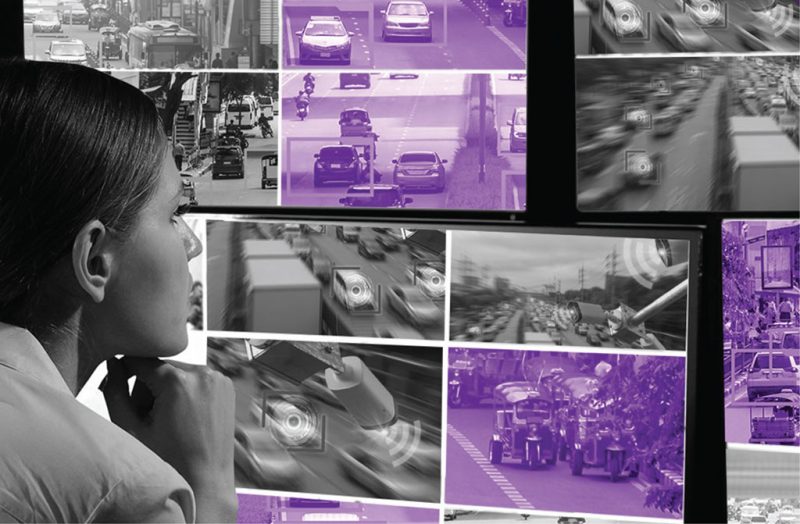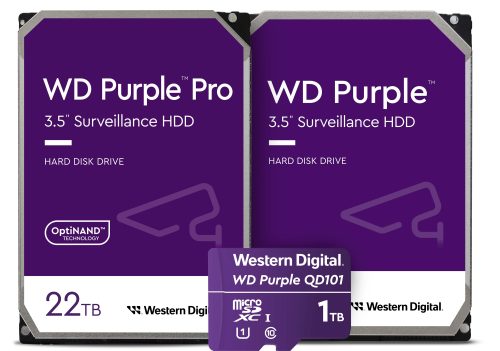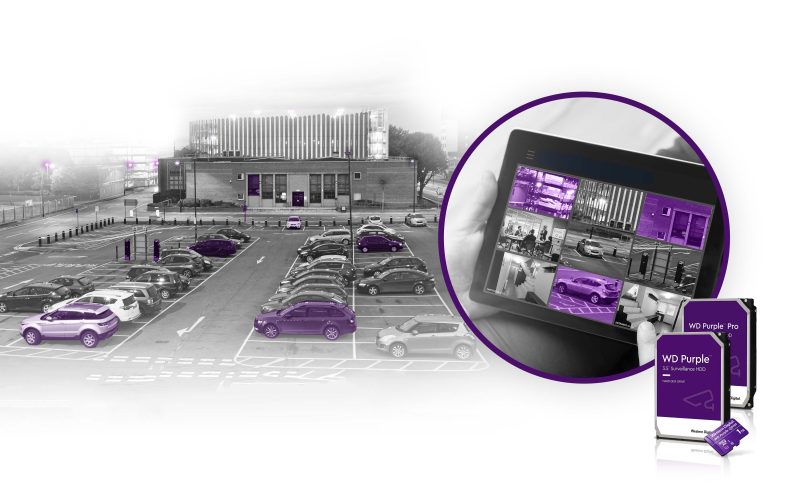![]()
1. What are Thailand’s trends regarding surveillance or video systems in 2023 and beyond?
In 2023, we continue to see Thailand focused on driving smart city initiatives to help improve quality of life for its citizens, communities, economy as well as the environment, and video surveillance systems (including smart video) are an integral component of a smart city infrastructure.
Surveillance is no longer just about security, but in many cases, it’s about extracting value and intelligence from the video captured and applying these insights to drive improvements and efficiency in various sectors. This could include retail shopper behaviors, or in managing a parking facility, or when producing manufactured products. Not only that, artificial Intelligence (AI) and machine learning (ML) are becoming the digital brains of many advanced use cases today. When combined with the latest smart video cameras, high-res videos and images, and network video recorders (NVRs), smart video analytics is enhancing and reshaping our lives in ways we cannot even imagine and it is relevant across virtually all industries – education, transport, manufacturing, smart cities, healthcare, sports, agriculture, the list goes on.
What was once impossible to do with the human eye, is now possible through the lens of smart video analytics. These systems can simultaneously look at and analyze multiple streams of video with incredible speeds, and zero-in on the smallest pixel of detail with high accuracy to detect and identify objects, people, events and anomalies in real-time – all without human intervention. Effective implementation of AI can help to eliminate human error with improved quality and accuracy. The technology is evolving, learning and growing in leaps and bounds every day.

2. What are some of the use cases for smart video analytics?
Smart video analytics has given rise to innumerable and invaluable use cases and has great promise for the future. For example, today, smart videos can identify and detect variances in consumer behavior, which might be ignored by the human eye, and can help avoid the occurrence of unwanted activity. It is also proving to be extremely helpful in retail surveillance as it can detect potential shoplifters based solely on their movements. The cameras use AI technology to create real-time body position and motion models. Deep learning systems then train these smart cameras to analyze these models in real-time and recognize specific body movements associated with shoplifting. The camera can alert the store manager if it detects suspicious behavior to prevent loss.
Another important use case is using AI-assisted video analytics to automate monitoring and notifications in agriculture to monitor crops, detect pests and diseases, and optimize crop yields. The technology can also be used to monitor livestock, detect potential health issues, and optimize feeding schedules.
In sports, video analytics can analyze player and team performance, help coaches make tactical decisions, help monitor fan engagement, and show real-time graphics and stats for broadcast.

In the healthcare industry, smart video analytics can be used for a variety of things such as monitoring and improving exam room flows and wait times; safeguarding patient, visitor, facilities and medical equipment; and even providing patient alerts or helping nurses make virtual hospital rounds.
Smart video analytics brings a greater ability to extract insights from video data, which ultimately allows businesses to drive improved operations, efficiency and security. Whether in a corporate setting, manufacturing, retail, city management, healthcare and so on, there are a lot of opportunities for AI-based video analytics, outside of the typical security realm.
3. What are the storage implications for smart video?
As camera resolutions increase, the greater detailed output not only delivers a larger picture, but it allows analytics systems to “see” and process more information. AI video analytics can take up a ton of storage, and it requires the right storage to bring information and insights to life.
Moving from Full HD (1080p) resolution to Ultra HD / 4k (2160p) can double or even triple the size of the video stream, increasing bit rates and requiring more storage for video data. Using the surveillance storage capacity estimator, for example, a solution that employs 16 cameras recording 24 hours a day, 7 days a week, at 18 frames per second at 4K resolution and using H.265 compression generates 1.5 TB of video data every day. That’s about 45 TB in just one month or 547.5 TB in a year.
In addition to transmitting a main video stream, modern network cameras also output auxiliary video streams, picture streams, and video metadata information, which all have different data characteristics, including structure, size and frequency of transmitted data for the hard disk drive (HDD) to process and store. These additional streams enhance both the usability of the video solution as well as the effectiveness of AI, and add workload and storage capacity requirements to the recorder’s storage subsystem.
AI-based solutions may also implement an image reference database for pattern matching. Metadata information ties these images to video segments for security functions such as video verification. For example, when an employee swipes their access control card against a card reader, an intelligent security system may grab a high-resolution image of the employee taken from a camera at the entry point in near real-time, comparing the frame image against the employee’s ID photo for verification.
All these factors drive increased workload demand in network recorders and create challenges for the storage medium.
4. What are some of the considerations when evaluating storage systems for smart video systems?

With growing trends to capture multiple data types and video streams per camera, and with deep learning solutions needing more video to train AI algorithms, there is one fundamental underpinning technology that cannot be overlooked, and that is storage.
While flash is ideal for on-camera, always-on video cameras and edge devices, HDDs are still the most efficient and cost-effective solution for storing massive amounts of video data, especially for analytics.
Western Digital has analyzed hundreds of DVRs and NVRs from various manufacturers and found that different methods are used to write data to storage devices. This leads to non-optimal data placement, inefficient drive activity, and impacts performance and reliability. In addition, the HDD workload in a typical DVR or NVR appears to be random due to mixing of sequential video stream writes with metadata and AI database writes. Seek efficiency, or finding the data on the drive quickly, is the main contributor to successful HDD operation in surveillance recorders, and drives that can optimize seeks would be better suited for DVR and NVR workloads.
Utilizing on-drive intelligence, a new generation of HDDs can recognize incoming video stream characteristics and data types, coalesce data together in cache and place data in specific track locations on disk, for optimal performance. It’s basically bunching all of the video and data streams together so data is not written all over the HDD.
Advanced AI-enabled recorders, video analytics servers and deep learning solutions also require additional huge capacity, performance and workload capability. They must include storage that is designed and tested to stand up to 24/7 operations while minimizing frame loss or dropped frames to reliably capture the footage.
With the right purpose-built drives, a smart video system can handle up to 64 single-stream HD cameras in addition to 32 concurrent AI streams. A high-capacity smart video HDD can also help businesses scale to meet growing storage needs.
The WD Purple Pro HDD range with OptiNAND technology delivers massive capacity in a drive engineered for advanced, AI-enabled, always-on smart video recorders, appliances, and servers. These drives also feature Western Digital’s exclusive AllFrame™ AI technology that improves ATA streaming to help reduce frame loss and improve overall video playback.
The WD Purple Pro drives are optimized to handle up to 64 single-stream HD cameras, as well as many of the latest smart cameras that transmit multiple streams. With a workload rating up to 550TB/year, these drives are built to keep up with heavy video data capture and analysis. In addition, the WD Purple Pro solution is engineered with an MTBF of up to 2.5 million hours for advanced smart video solutions that operate in 24/7 environments.
5. What should we expect to see moving forward?
There is a significant value that businesses could be capturing from deploying AI in their facilities, which could include improving response times to critical events, enabling more sophisticated analysis of visual data or analyzing patterns to improve business intelligence. Storage – the right storage solution – will continue to be the key foundational technology for new smart video use cases.

Smart video surveillance and video analytics has come a long way. No longer are we using video security and monitoring purposes just to see what is happening. We’re seeing the use of AI, ML and deep learning on video to predict what will happen. The future potential comes from extracting actionable insights, and we can only imagine what will come next.
![]()
![]()
บริษัท ซินเน็ค (ประเทศไทย) จำกัด (มหาชน)
33 ถนนสุคนธสวัสดิ์ แขวงลาดพร้าว
เขตลาดพร้าว กรุงเทพฯ 10230
Tel : +66(0) 2553-8888
https://www.synnex.co.th/th/
